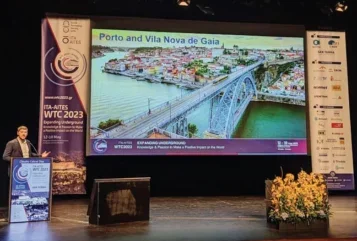
Most of these interviews in T&TI have been with major figures in tunnelling who have long and successful careers – which mean that they tend towards to upper end of the age spectrum.
Claudio Cabral Dias won the ITA Young Tunneller of the Year award in 2023. He was 35. He was worked internationally and in the UK on, among many other projects, Crossrail, HS2 and Hinkley Point C. In other words, he has achieved a lot already, and still has a full career ahead of him. The future of tunnelling lies with him and those like him.
He is Portuguese. “I was born in a small village in the mountains,” he says. “There are no tunnels there, only mountains; so it was quite late, at university actually, when I was studying civil engineering in Porto that I got more interested in this field. My father is a builder: I used to go during the summer and work with him building houses, so I was interested in construction overall but not necessarily in tunnels.
“In the first years of university, actually, I was not so sure I had chosen the right path for me because it was quite abstract: there was lots of maths and physics but nothing that was actually changing the environment, no physical building of things that communities will use.”
What changed? And why then, in the end, tunnels?
“It was because I had a very good professor for soil mechanics. Manuel Matos Fernandes is more than just good, he is one of those professors who are passionate about their subject. When he talked about geotechnics it was really interesting,’ he says. “Porto itself is amazing. It is a place where geology has deeply shaped it.” For those who do not know the city, it lies on the steep valley carved out by the River Douro and spanned by spectacular and remarkably-engineered bridges, most notably one by Gustave Eiffel.
“We have granite, very hard, and then you have also the residual soils. Professor Fernandes talked about complexity of working with ground: it is not a man-made material so there is all the variability that comes with that. You study the ground, you choose what you want to do with it; so that part of the course was somewhere between engineering and art. It is much more than just numbers. It is actually something that you have to put your mind to.
“When you dig a hole it is not certain what you will find; until you dig it you don’t know what is at the other end. With tunnels, towards the end you are reducing that uncertainty but at the beginning it is quite high. Before choosing engineering, I had thought of studying history and actually there are some links: by looking at the past you will be able to understand better the present or the future. I see a bit of that in tunnelling. The more you study either subject the more you then understand and also the more questions get raised as well.
“I spent my last year specialising in geotechnics then went to Barcelona to do my master’s thesis. It was in the application of numerical analysis to shafts. The timing of that was good: this was 2011, not so long ago, but at that time numerical analysis was a growing market and there were plenty of new developments to be made in it, especially in the 3D field. We were not really developing the software – commercial softwares were already available – but what we were developing was more creative ways of using it, more efficient methods as modellers.
“After Barcelona I applied for jobs in Portugal but the 2008 financial crisis was still having its effects so that was difficult. I decided to try abroad and got a job in São Paulo, in Brazil. It was with a small consultancy company that, luckily for me, specialised in tunnels.
“And, being small, it took on smaller parts of designs but for many different projects. So I started on Line 6 of the São Paulo metro, then worked on Line 4 of the Rio de Janeiro metro, and then on the Brasilia metro expansion; there were five or six projects in three years.
“That gave me contact with different parts of design and construction, and I was able to travel a bit. It was exciting, too, because I started to understand better the scale of the works. When you are designing things you have the plans in your laptop, and they don’t look so big but then you go into a shaft or into a station and then it’s enormous. You think ‘Wow! I hope my calculations are right, these are massive holes…’
“It is always good to go to the construction site because only that way can you see the reality. Sometimes it is difficult because as designers we design the project and then a contractor will come and build it and you are not there. You don’t actually see it because you have done your design two or three years before and if there is something in your design that you could have changed to make their job easier you normally don’t find it out.
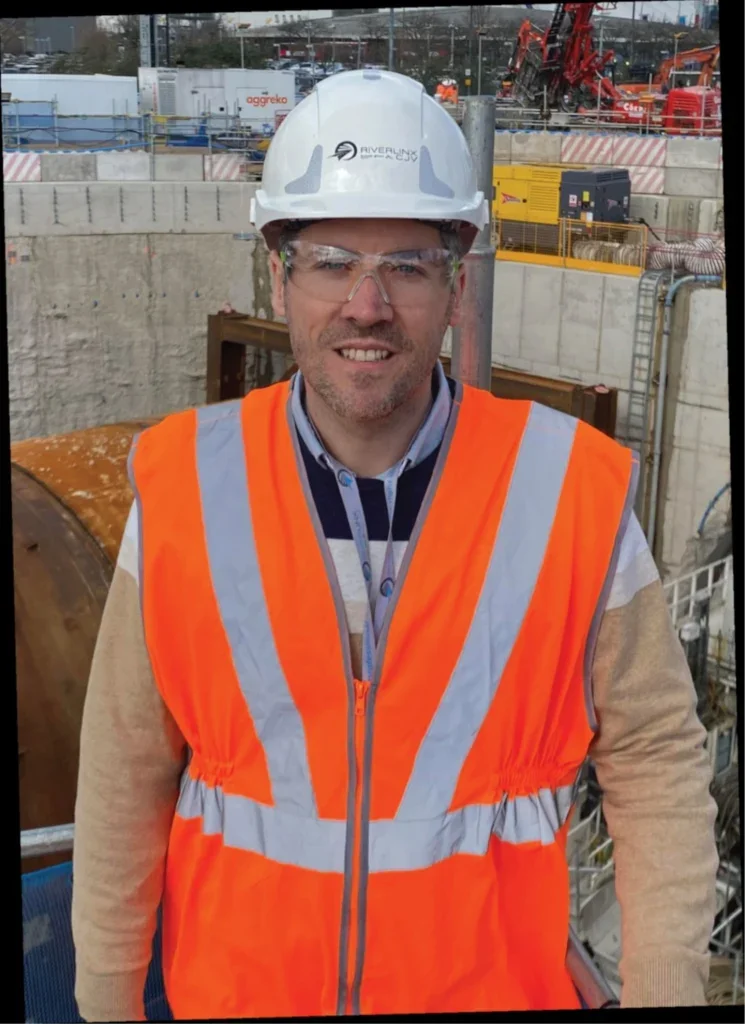
“That’s why Design and Build contracts are my favourites because then you actually are designing it for the contractor and you actually are getting those inputs and feedback about constructability and how they prefer to work, and you actually engage with them discussing what is the best solution in terms of the programme and resources. I think it is more complete that way; you feel you gain so much more from a project if you’ve seen it being put up on the ground.
“I was enjoying my time in Brazil but the market there is quite domestic. After three years I was wanting something more international; and, I got an offer from CH2M (now Jacobs) and came to London. I worked mainly in design, first on the Ipswich Cable Diversion, then on National Grid Tunnels and London Underground’s Tottenham Court Road Station Upgrade. After that I was seconded to Crossrail UK to work on the Fisher Street cavern. That, again, was on-site; and, that helped me to get my chartership, which was very important to me. There is nothing like being on a site day after day rather than just visiting, to give you experience and teach you things.”
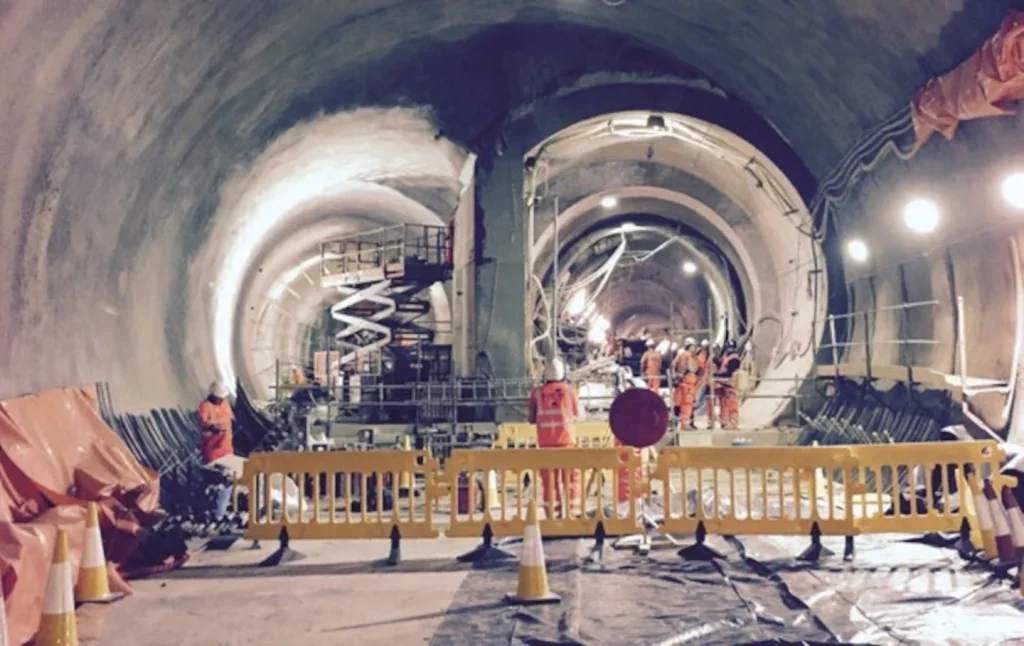
Designs for tunnels in Los Angeles and India followed, and then work on Hinkley Point C project – “I was doing 3D models for the offshore cooling water tunnels and shafts” – and HS2.
“I was hired in 2018 by the Spanish company Typsa, part of a Joint Venture with Arup and Strabag, as Senior Tunnel Engineer for the High Speed 2 project, London. HS2 was then in the early stage of design. There was already a concept and we had to develop it, first with scheme design and then in detail. It was a very interesting job for me because I was working as part of the design house that was working with the contractor – one of the Design and Build contracts I was speaking of.
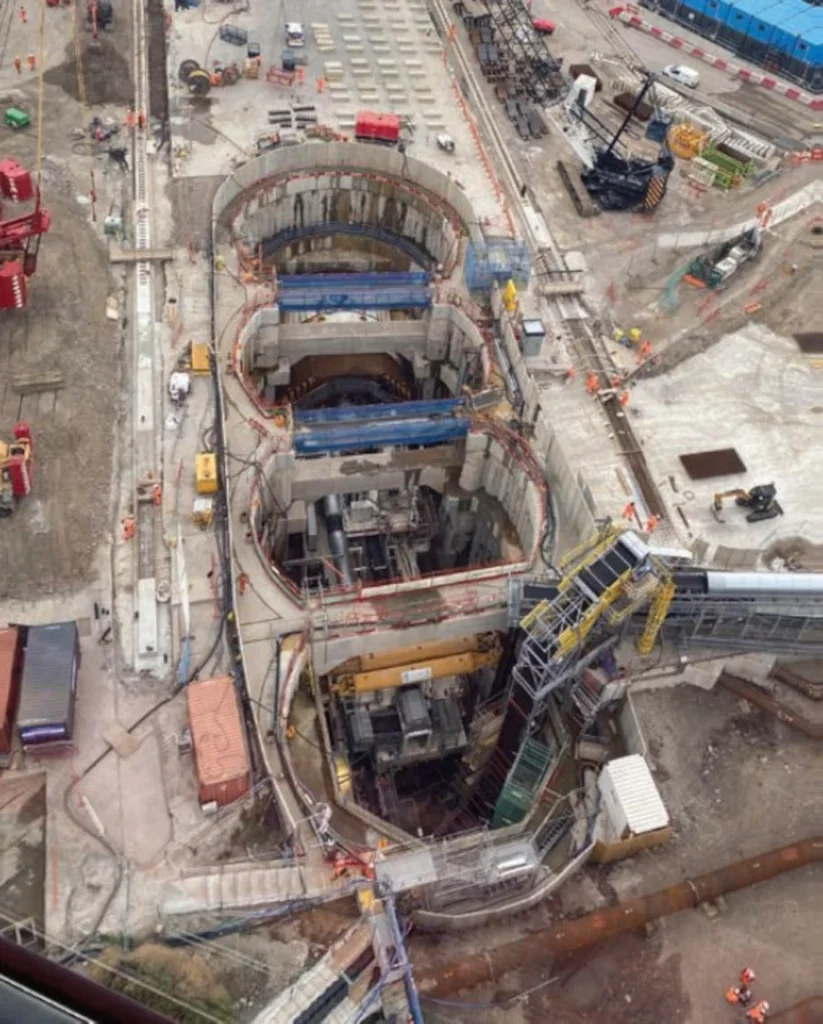
“We were all in the same building, Victoria House, that is just by the British Museum, a wonderful classical building and discussing the HS2 rail link with the contractor. I was mainly working on ventilation shafts; and it was a very international environment. London is quite international anyway and I had colleagues from all over the world. From the three companies that make up the Joint Venture there was a mix of Austrians, British and Spanish.
“It was a very good experience because, for instance, the Germans were very focused on the TBM and they would be more practical with less small talk and very different from the Spanish and the British. It was very healthy being able to learn from all these interactions. Culturally it was a really good environment. It was one of the projects that I really enjoyed the most because of that. My six years in London became almost like a dream come true; starting in a small village you end up in a wonderful building designing rail lines with people from all round the world.”
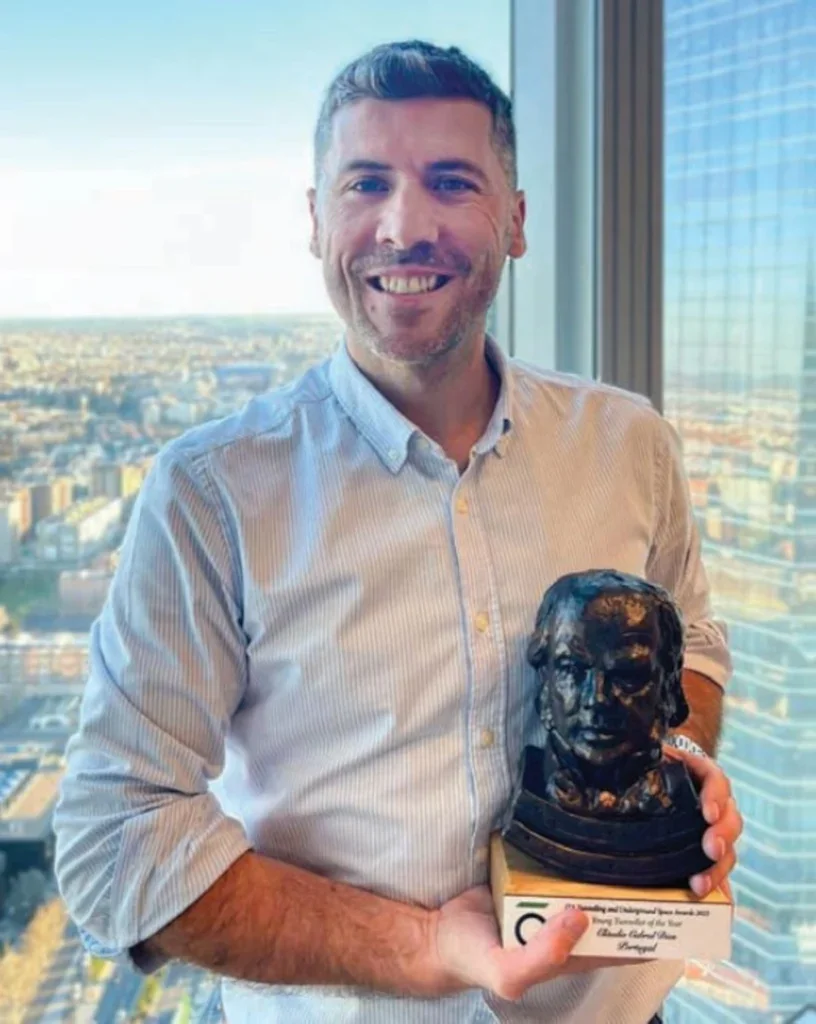
Since 2020 he has been with Spanish company Ayesa, where he is the Head of Ground Engineering & Tunnelling. Projects have included the Silvertown Tunnel in London, for which Ayesa designed an oval-shaped chamber in which to rotate the TBM through 180° in order to excavate the second of its twin tunnels; Line 5 of the Metro de Madrid; and, work on the Metro do Porto, his old university city.
“Now I have a lot of responsibility because one year ago I was promoted to head of my department, which is quite challenging because I have around 30 people in the team. They range from geologists to engineers; so to be honest I’m adapting to that part.”
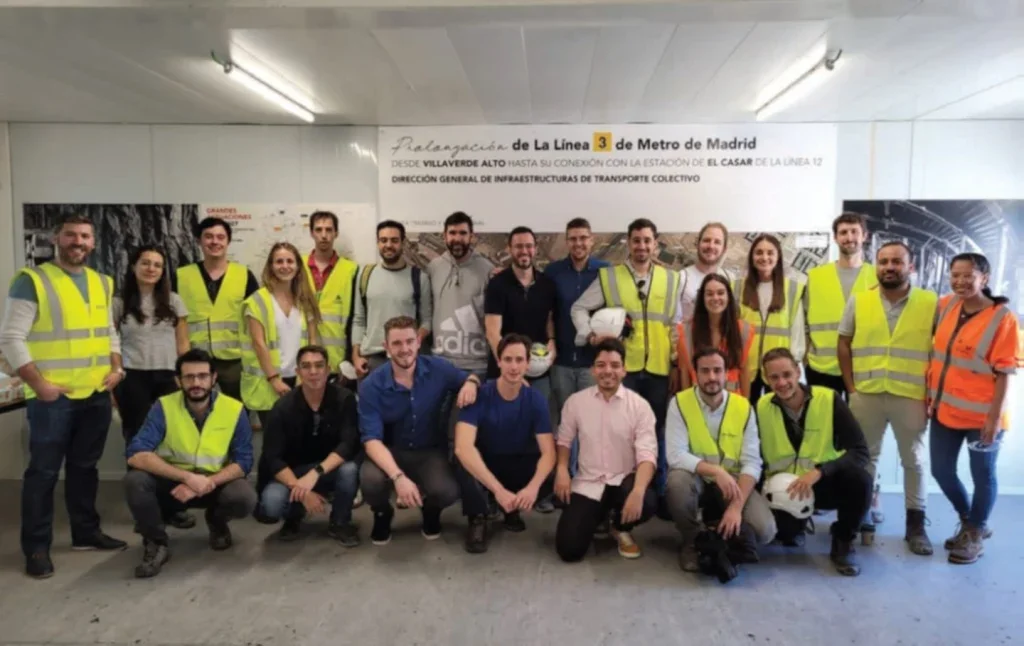
In 2023 he won the ITA Young Tunneller of the Year award. (He had previously been shortlisted for the 2022 award, so they clearly had their eye on him.) Why does he think he was chosen?
“It was a great honour. I think it may have to do with courses that I have been delivering. I was already collaborating with BTS Young Members (BTSYM) when I was in Britain but since I moved to Spain I start collaborating also with CBT, which is the Brazilian equivalent, and CPT in Portugal, and also AETOS in Spain. And, I have been involved with ITACUS, of course, as well. Since I was already specialising in 3D analysis it was proposed to me that I should give courses on it; so I have been doing that, in English and in Spanish. And that is something I find really fascinating because you meet people from America, from Asia, from all over the world. I think that probably around 150 people have attended the courses over the last three years.
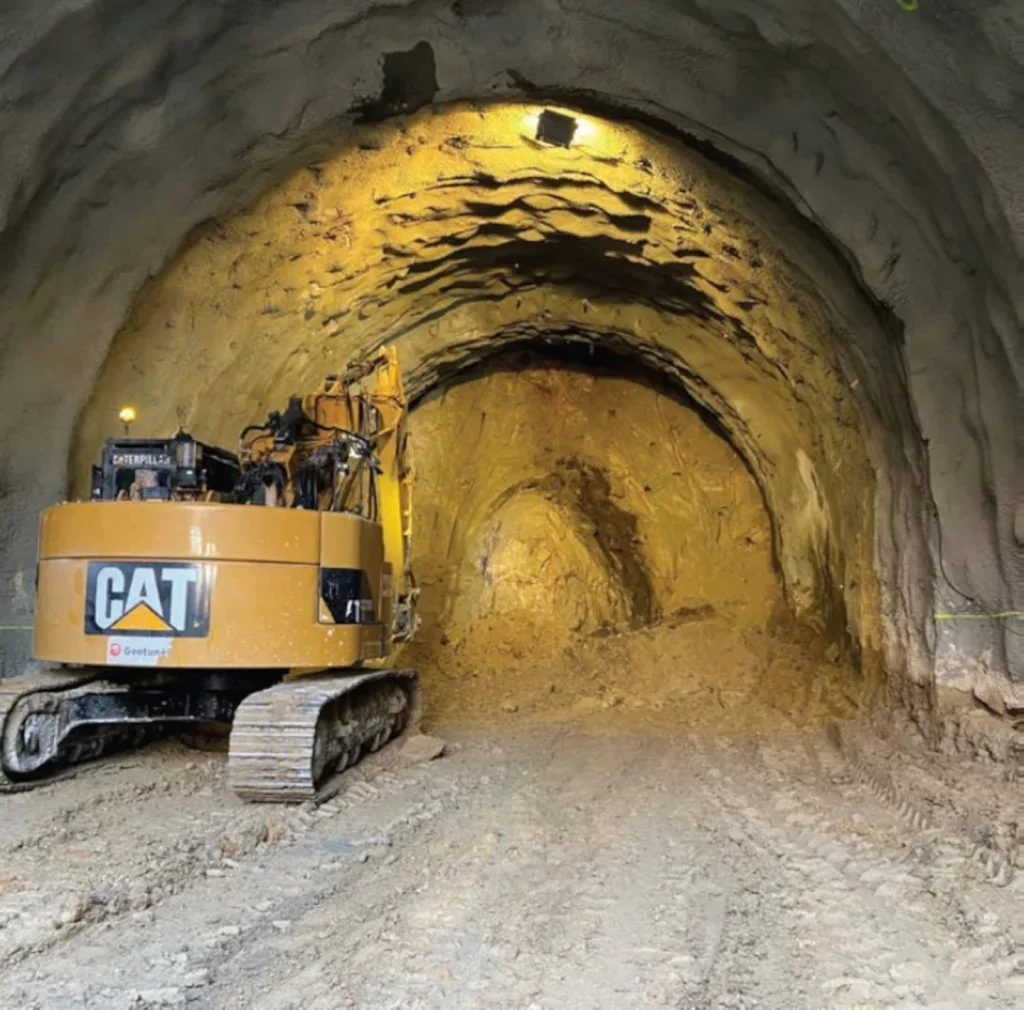
“So, I think it was partly that contribution to the training of younger members that may have played a part. I was supporting the BTS, CBT and AETOS, and BTS and I started to deliver webinars during the pandemic; so for the CBT webinars I would be telling the audience in Brazil about how they are doing some of the shafts in the UK, and for the BTS I would deliver information about Spanish ways of doing things. It may have been a combination of those.”
What of the future? “Where to go next? I am really enjoying giving those courses. Teaching is something that is giving me a lot of satisfaction: you explain how to do something and then you get some questions that really make you think ‘Do I really understand this or do I have to study it more?’
“So, I think for the future I would consider some academic or university job but in combination with industry so I could carry on with the practical side of tunnelling. I think I enjoy the challenge of the technical part but I still need to see the works being actually materialised: you design something and in one or two years you know you are going to see it actually on the ground.”
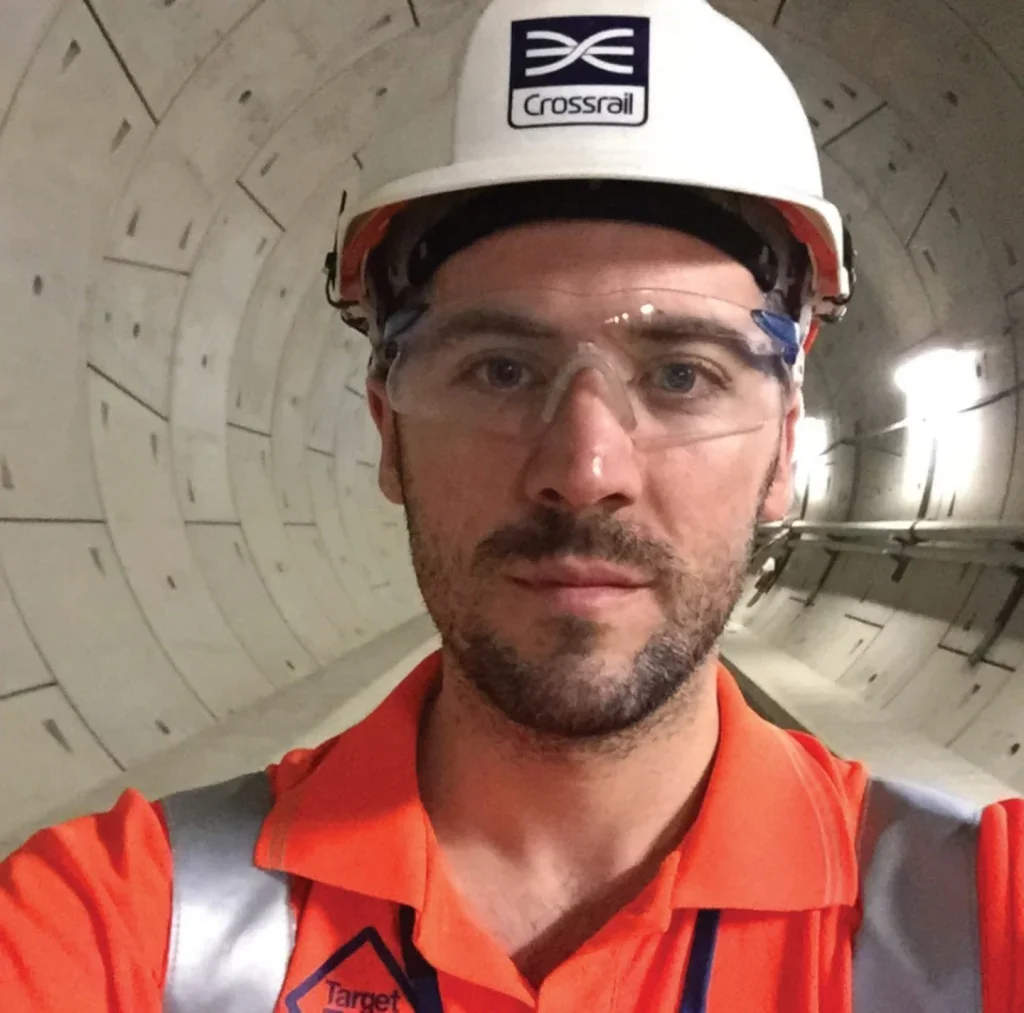
And what, in his current lectures and in any future teaching career, are his priorities for students to learn – the fundamentals of tunnelling that they dare not lose sight of?
“First, I try to get them to think for themselves, because a lot of people coming to my course want to be given rules of thumb. They ask: ‘What should we do in such-and-such a case?’ And then you explain that it depends, because every tunnel and every tunnelling project is different so there are really no rules that you can apply to all of them. So you yourself have to think and work out what is the best way, what the alternatives are, and why this one or that one will be better.
“And there is no one right answer. Different countries have different methodologies, different experiences, different methods and means.
“And the second thing I try to tell them is not be scared of doing things in 3D. Nowadays more and more people use 3D models. Even a few years ago they used to be time-consuming and difficult to populate but now they are becoming userfriendly so they are easy to follow up. Of course, younger people have less difficulty with this because they have been digital since they were born; for older ones, old habits are difficult to change.
“And a third thing is to be more collaborative: work more with people with different specialities. The architect, the mechanical engineer, the geotechnical person – sometimes there is still the kind of feeling, ‘Oh, we know that architects do it that way, but we tunnel engineers do it this way; we have done our part correctly so if there is an issue it’s not our problem and we can blame the mechanical engineer or the designer or the architect or whoever when it goes wrong.’ But it is all one project and all these aspects have to work together and it is the interests of everyone to get the best outcome for it.
“So I try to encourage more understanding. I always advise in those courses to not stick just to the discipline you know. We know about tunnelling, we know about civil engineering, but if possible try to participate in meetings even of the electrical guys, the logistics guys, the designers, all of the others. You may not know enough to contribute but, even if you say nothing, just by listening you will understand better why those people are actually requesting something; or, even if you are not able to help or change something on that project it may be that in the next project you will be able to be a bit more collaborative and helpful toward the other disciplines.
“It goes back to what I was saying about the designer actually being on the site, working there with the contractor, seeing the problems, and understanding that particular project and piece of ground.
“But I think this collaboration is increasingly part of the way that we work nowadays. BIM methodology means that we have a shared model that everyone has access to and where everyone is working in the same environment. I think that aligns very well with this perspective. It is something that in my – shall we say, short – career I have been able to see. When I started in Brazil everything was more compartmentalised. You would get your part of the design, and add your contribution to it, and then send it to the client, not really knowing maybe what they were actually going to build. If it is an electricity tunnel, as the Ipswich one, you might not know if the cables are to go on this side or that side, or towards the top or the bottom. You might be told that there are going to be some more concentrated loads around this part, but you wouldn’t know the details.
“Nowadays we work in a more integrated way and you actually see what is going on inside the models. That’s a more holistic and complete way of working on projects, and it will continue to grow as time goes on and everyone is more connected digitally.
“I think this is one of the beauties of these major infrastructure projects. You are able to be connected. I can be here, in Madrid, and also working with teams from Australia and from India and sharing their experience. In the tunnelling industry we depend a lot on those sorts of skills, and the training and experience that comes from shared working on job after job to get to that level of expertise.”
SPOTLIGHT ON SUSTAINABILITY
“Sustainability is a big concern: I think everyone in the civil engineering industry is worried, especially about the concrete we use, and in particular because of its cement.
“Cement is one of the main polluters worldwide; it is hugely energy intensive to produce. But at the same time it is quite a durable material, so if we design it well we can have structures that can last 200 years and much longer.
“So the issue is how to produce a more sustainable concrete. I see methods already consolidated to replace part of the cement with some byproducts of other industries, like Ground Granulated Blast-Furnace Slag (GGBS), and things like that. Even glass or plastic have been suggested. I think plastic is going to be difficult but there are byproducts of other industries that could be used.
“We replace a lot of rebar by steel fibres or microfibres that produce less carbon. These are the main fields but I think that, to be honest, a holistic, moralistic approach is necessary: it is not just the concrete itself but the entire process.
“For instance, using more numerical and 3D analysis is also a way of making the design more efficient, because you can analyse a structure’s behaviour more realistically. Materials play their part; so also do contractors using more efficient equipment and building in a more efficient way.
“So, I think the boundaries are always moving. Every year we push a bit. Some years we may be transforming materials really fast, maybe other years it is standards that move, or designs. I think everyone is concerned but one must not think that changing just one thing will solve the problem. Everyone is doing their part and improving.”






